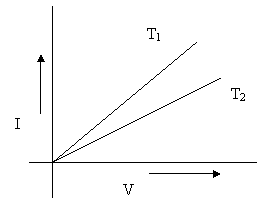UPSC Exam > UPSC Tests > General Science(Prelims) by IRS Divey Sethi > Test: Ohm’s Law - UPSC MCQ
Test: Ohm’s Law - UPSC MCQ
Test Description
5 Questions MCQ Test General Science(Prelims) by IRS Divey Sethi - Test: Ohm’s Law
Test: Ohm’s Law for UPSC 2024 is part of General Science(Prelims) by IRS Divey Sethi preparation. The Test: Ohm’s Law questions and answers have been
prepared according to the UPSC exam syllabus.The Test: Ohm’s Law MCQs are made for UPSC 2024 Exam. Find important
definitions, questions, notes, meanings, examples, exercises, MCQs and online tests for Test: Ohm’s Law below.
Solutions of Test: Ohm’s Law questions in English are available as part of our General Science(Prelims) by IRS Divey Sethi for UPSC & Test: Ohm’s Law solutions in
Hindi for General Science(Prelims) by IRS Divey Sethi course. Download more important topics, notes, lectures and mock
test series for UPSC Exam by signing up for free. Attempt Test: Ohm’s Law | 5 questions in 10 minutes | Mock test for UPSC preparation | Free important questions MCQ to study General Science(Prelims) by IRS Divey Sethi for UPSC Exam | Download free PDF with solutions
Detailed Solution for Test: Ohm’s Law - Question 1
Test: Ohm’s Law - Question 2
The following fig. shows I-V graph for a given metallic wire at two temperatures T1and T2.Then,

Detailed Solution for Test: Ohm’s Law - Question 2
| 1 Crore+ students have signed up on EduRev. Have you? Download the App |
Test: Ohm’s Law - Question 3
How many electrons are flowing per second through a section of a conductor corresponding to current of 1A?
Detailed Solution for Test: Ohm’s Law - Question 3
Detailed Solution for Test: Ohm’s Law - Question 4
Detailed Solution for Test: Ohm’s Law - Question 5
|
39 videos|110 docs|262 tests
|
Information about Test: Ohm’s Law Page
In this test you can find the Exam questions for Test: Ohm’s Law solved & explained in the simplest way possible.
Besides giving Questions and answers for Test: Ohm’s Law, EduRev gives you an ample number of Online tests for practice
|
39 videos|110 docs|262 tests
|
Download as PDF

















